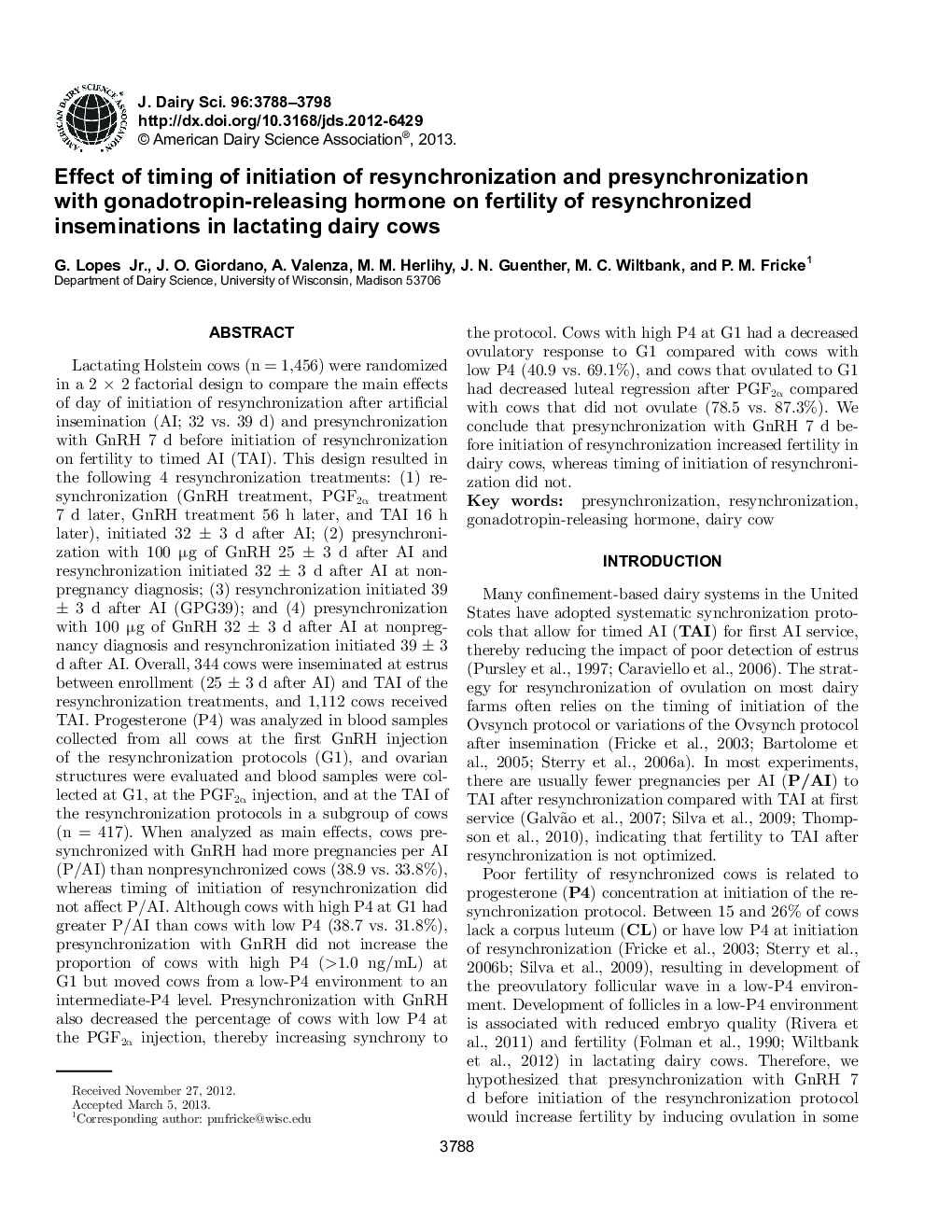| Article ID | Journal | Published Year | Pages | File Type |
|---|---|---|---|---|
| 10978168 | Journal of Dairy Science | 2013 | 11 Pages |
Abstract
Lactating Holstein cows (n = 1,456) were randomized in a 2 Ã 2 factorial design to compare the main effects of day of initiation of resynchronization after artificial insemination (AI; 32 vs. 39 d) and presynchronization with GnRH 7 d before initiation of resynchronization on fertility to timed AI (TAI). This design resulted in the following 4 resynchronization treatments: (1) resynchronization (GnRH treatment, PGF2α treatment 7 d later, GnRH treatment 56 h later, and TAI 16 h later), initiated 32 ± 3 d after AI; (2) presynchronization with 100 µg of GnRH 25 ± 3 d after AI and resynchronization initiated 32 ± 3 d after AI at nonpregnancy diagnosis; (3) resynchronization initiated 39 ± 3 d after AI (GPG39); and (4) presynchronization with 100 µg of GnRH 32 ± 3 d after AI at nonpregnancy diagnosis and resynchronization initiated 39 ± 3 d after AI. Overall, 344 cows were inseminated at estrus between enrollment (25 ± 3 d after AI) and TAI of the resynchronization treatments, and 1,112 cows received TAI. Progesterone (P4) was analyzed in blood samples collected from all cows at the first GnRH injection of the resynchronization protocols (G1), and ovarian structures were evaluated and blood samples were collected at G1, at the PGF2α injection, and at the TAI of the resynchronization protocols in a subgroup of cows (n = 417). When analyzed as main effects, cows presynchronized with GnRH had more pregnancies per AI (P/AI) than nonpresynchronized cows (38.9 vs. 33.8%), whereas timing of initiation of resynchronization did not affect P/AI. Although cows with high P4 at G1 had greater P/AI than cows with low P4 (38.7 vs. 31.8%), presynchronization with GnRH did not increase the proportion of cows with high P4 (>1.0 ng/mL) at G1 but moved cows from a low-P4 environment to an intermediate-P4 level. Presynchronization with GnRH also decreased the percentage of cows with low P4 at the PGF2α injection, thereby increasing synchrony to the protocol. Cows with high P4 at G1 had a decreased ovulatory response to G1 compared with cows with low P4 (40.9 vs. 69.1%), and cows that ovulated to G1 had decreased luteal regression after PGF2α compared with cows that did not ovulate (78.5 vs. 87.3%). We conclude that presynchronization with GnRH 7 d before initiation of resynchronization increased fertility in dairy cows, whereas timing of initiation of resynchronization did not.
Related Topics
Life Sciences
Agricultural and Biological Sciences
Animal Science and Zoology
Authors
G. Jr., J.O. Giordano, A. Valenza, M.M. Herlihy, J.N. Guenther, M.C. Wiltbank, P.M. Fricke,
